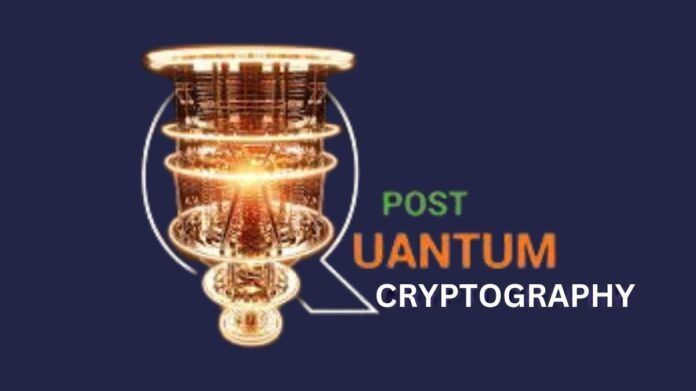Algorithms Developed by IBM Have Been Announced as the First Published NIST Post Quantum Cryptography Standards.
What is post quantum cryptography?
A branch of cryptography known as post-quantum cryptography (PQC) is devoted to creating cryptographic algorithms that withstand attacks from both classical and quantum computing systems.
What is the purpose of post-quantum cryptography?
Post-quantum cryptography’s goal is to create and use cryptography algorithms that are immune to quantum computer assaults. These algorithms guarantee that sensitive data is secure even in a post-quantum world since they are based on mathematical puzzles that are thought to be challenging for quantum computers to solve. PQC is necessary to protect conversations, transactions, and other digital data that needs to be protected for a long time.
Post Quantum Cryptography Standards
The National Institute of Standards and Technology (NIST) of the U.S. Department of Commerce has revealed today that the first three NIST Post Quantum Cryptography standards include two algorithms created by IBM.
Three NIST Post Quantum Cryptography algorithms are included in the standards; two of them, ML-KEM (formerly known as CRYSTALS-Kyber) and ML-DSA (formerly known as CRYSTALS-Dilithium), were created by IBM researchers in association with a number of business and academic partners. One of the researchers that co-developed the third published method, SLH-DSA (formerly submitted as SPHINCS+), has subsequently joined IBM. Furthermore, FN-DSA, formerly known as FALCON, is the fourth algorithm created by IBM that has been chosen for future standardisation.
Post Quantum Cryptography NIST
The official release of these methods is a significant step forward in safeguarding the world’s encrypted data from cyberattacks that might be attempted with the special capabilities of quantum computers, which are quickly becoming relevant to cryptography. At this time, the processing capacity possessed by quantum computers will be sufficient to breach the encryption standards that underpin the majority of the world’s data and infrastructure at the moment.
“IBM hopes to employ quantum computing to both secure the globe and give the general public practical uses for the technology. Vice President of IBM Quantum Jay Gambetta stated, “We are thrilled about the amazing progress we have made with today’s quantum computers, which are being used across global industries to explore problems as we push towards fully error-corrected systems.” “We are aware, though, that these developments may signal a change in the security of our most private information and systems. The first three NIST Post Quantum Cryptography standards published by NIST represent a major achievement in the endeavour to create a quantum-safe future coexisting with quantum computing.”
The planned and completed hardware and software milestones on IBM’s Quantum Development Roadmap demonstrate how quickly quantum computing a completely new discipline of computing is evolving into useful, large-scale systems. For example, IBM plans to ship its first error-corrected quantum system by 2029. It is projected that this system will do hundreds of millions of quantum operations in order to provide precise answers for important and challenging problems that are currently beyond the capabilities of conventional computers.
According to IBM’s roadmap, this system will be expanded to perform up to one billion quantum operations by 2033. As IBM works towards these objectives, the corporation has already provided experts in materials development, healthcare and life sciences, finance, logistics, and other industries with utility-scale systems that will enable them to start utilising and scaling their most urgent problems to quantum computers as they evolve.
But the development of quantum computers with greater capability could pose threats to current cybersecurity measures. With increasing speed and mistake correction capabilities, they will probably also be able to crack the most popular cryptographic systems in use today, like RSA, which has long secured data worldwide. The world’s top cryptography experts at IBM have been working together for several decades, and they are still at the forefront of developing algorithms that safeguard data from potential threats. These algorithms might eventually take the place of the encryption techniques in use today.
The recently released standards from NIST are intended to protect digital signatures used for identity authentication as well as data transferred over public networks. Now that they are official, they will serve as the benchmark, serving as guidelines for governments and businesses across the globe to start implementing post-quantum cybersecurity measures.
NIST requested that new, quantum-safe cryptographic methods be developed and submitted by cryptographers worldwide in order to be evaluated for future standardisation in 2016. Four of the 69 algorithms that were submitted for assessment in 2022—CRYSTALS-Kyber, CRYSTALS-Dilithium, Falcon, and SPHINCS+ were selected for standardisation in the future.
Apart from the ongoing assessments aimed at releasing Falcon as the fourth official standard, NIST is also searching for and assessing other algorithms to broaden its collection of NIST Post Quantum Cryptography algorithms. These include multiple algorithms created by IBM researchers. IBM cryptographers have been at the forefront of the development of these tools, which now include three recently submitted digital signature schemes that NIST has accepted for consideration and are going through the first phase of testing.
IBM continues to include NIST Post Quantum Cryptography into several of its own products, like IBM z16 and IBM Cloud, in order to fulfil its aim of making the world quantum-safe. In 2023, IBM published the IBM Quantum Safe roadmap. It is a three-part plan that outlines the steps towards progressively more sophisticated quantum-safe technology.
The phases of the plan include observation, transformation, and discovery. In order to assist clients in achieving quantum safety, the company has introduced IBM Quantum Safe technology and IBM Quantum Safe Transformation Services in addition to this plan. The Cryptography Bill of Materials (CBOM), a new standard for capturing and exchanging data on cryptographic assets in software and systems, is one of these technologies.

